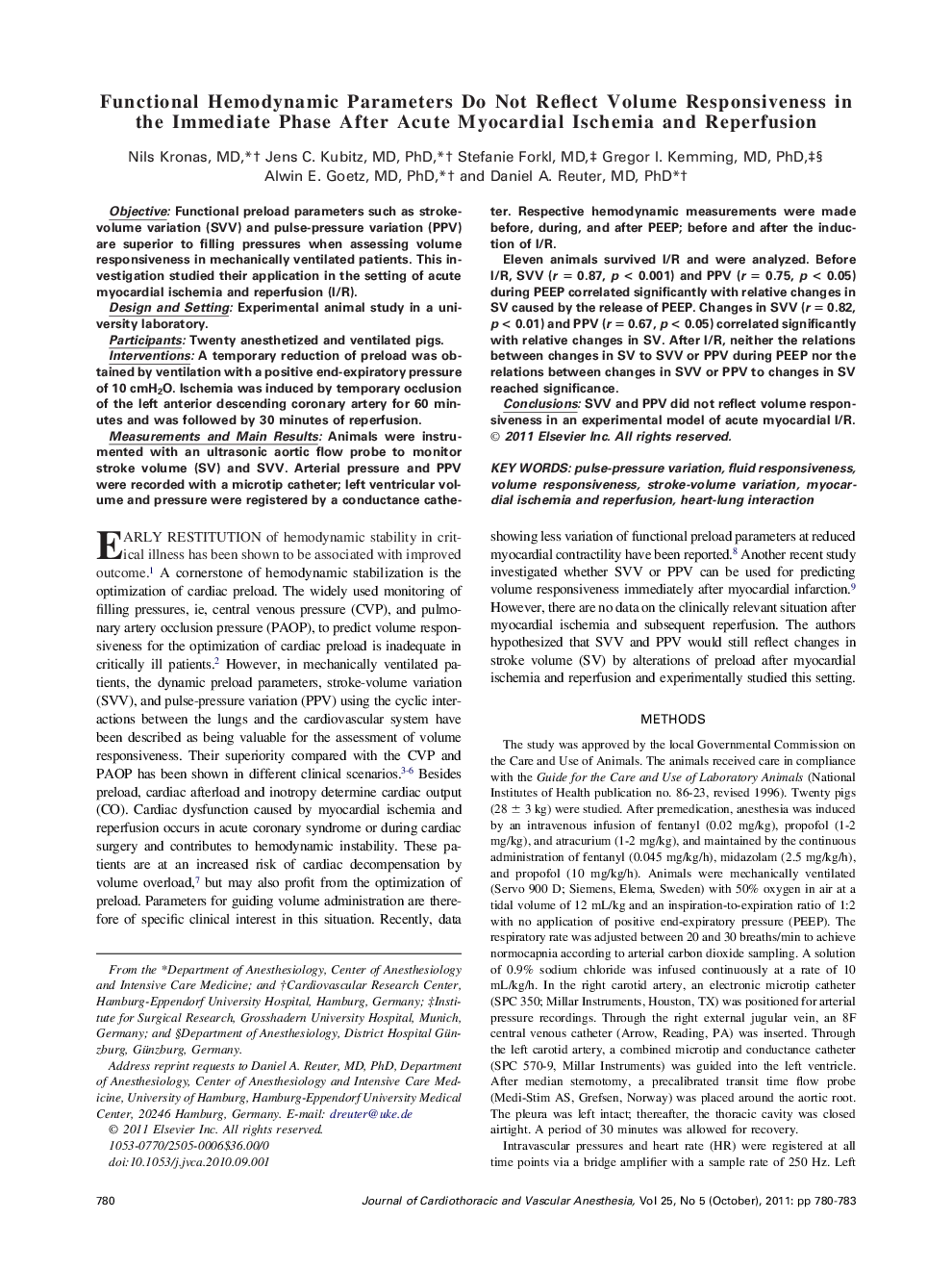| Article ID | Journal | Published Year | Pages | File Type |
|---|---|---|---|---|
| 2760757 | Journal of Cardiothoracic and Vascular Anesthesia | 2011 | 4 Pages |
ObjectiveFunctional preload parameters such as stroke-volume variation (SVV) and pulse-pressure variation (PPV) are superior to filling pressures when assessing volume responsiveness in mechanically ventilated patients. This investigation studied their application in the setting of acute myocardial ischemia and reperfusion (I/R).Design and SettingExperimental animal study in a university laboratory.ParticipantsTwenty anesthetized and ventilated pigs.InterventionsA temporary reduction of preload was obtained by ventilation with a positive end-expiratory pressure of 10 cmH2O. Ischemia was induced by temporary occlusion of the left anterior descending coronary artery for 60 minutes and was followed by 30 minutes of reperfusion.Measurements and Main ResultsAnimals were instrumented with an ultrasonic aortic flow probe to monitor stroke volume (SV) and SVV. Arterial pressure and PPV were recorded with a microtip catheter; left ventricular volume and pressure were registered by a conductance catheter. Respective hemodynamic measurements were made before, during, and after PEEP; before and after the induction of I/R.Eleven animals survived I/R and were analyzed. Before I/R, SVV (r = 0.87, p < 0.001) and PPV (r = 0.75, p < 0.05) during PEEP correlated significantly with relative changes in SV caused by the release of PEEP. Changes in SVV (r = 0.82, p < 0.01) and PPV (r = 0.67, p < 0.05) correlated significantly with relative changes in SV. After I/R, neither the relations between changes in SV to SVV or PPV during PEEP nor the relations between changes in SVV or PPV to changes in SV reached significance.ConclusionsSVV and PPV did not reflect volume responsiveness in an experimental model of acute myocardial I/R.
